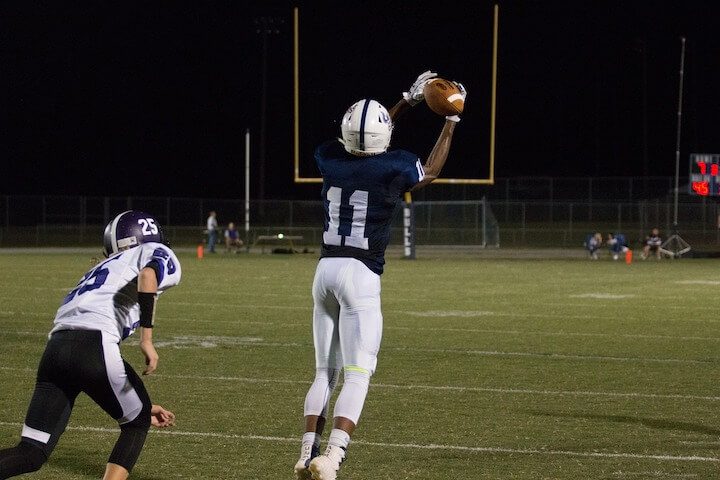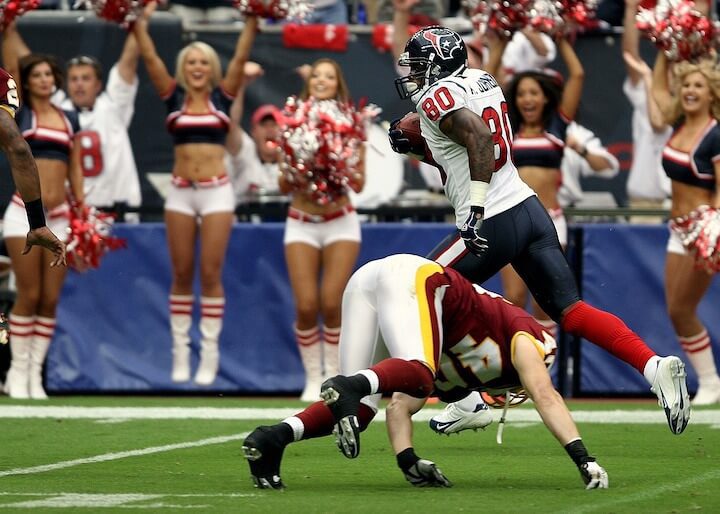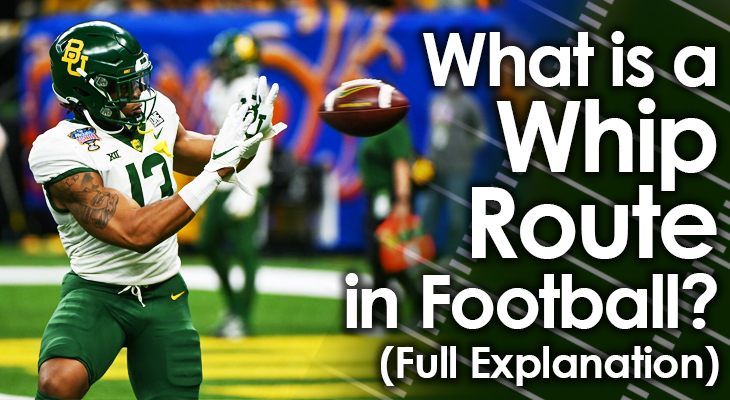There are many different passing routes that receivers will learn when they start playing football.
These are the basic routes that every receiver will run, no matter what team they're on and what the team's offensive philosophy is.
These passing routes are generally referred to as a group of routes known as the Route Tree.
That's because all of these routes start from the same trunk, but then "branch out" in different ways to accomplish different things.
Once receivers master the skills of these basic passing routes, coaches may start to layer on different variations on top of the Route Tree.
Some of these variations are what's called "double moves." These combine two routes into one -- with the receiver running the first route for the first part and then breaking off into the second route to finish.
A good example of this is the Whip Route.
Let's take a closer look at what the Whip route is, and how it should be run from start to finish.
What is a Whip Route in Football?
A Whip route is a "double move" passing route.
The idea behind it is to fake the defender out, making him think the route is going inside, only to end up going the other way, to the outside.
In general, the Whip route is referred to as an "underneath route," and it's designed to isolate one defender against the receiver running it.
In almost all cases, teams will run a Whip route specifically as a complementary route -- as part of a whole package for an offensive play.
The ones tasked to run this route are usually receivers who line up in the slot -- about halfway between the last offensive lineman on his side of the field and an outside wide receiver who's lined up closer to the sideline.
The complementary route from the outside receiver will be something that clears out the outside of the field near the sideline.
The route run by the outside receiver will usually be deeper -- or toward the middle of the field if it's a goal-line situation -- so as to potentially draw attention from a safety away from the slot receiver running the Whip.
Most of the time, offensive coaches will call a Whip route against man-to-man defensive coverage, allowing them to isolate the route.
Ideally, the outside receiver clearing out the space toward the sideline will provide plenty of room for the slot receiver to finish his Whip route.
Then after he catches the ball, he'll have plenty of room to run with the ball in his hand to gain extra yardage. Or if the play is near the goal line, he'll have successfully caught a touchdown pass.

How to Run the Whip Route
There are two parts to the Whip route, as mentioned.
The first part is the fake toward the inside, while the second part will end toward the outside part of the field near the sideline.
It's very important that the receiver running the Whip sell the inside fake to gain ample separation from the defender when he finishes the route.
1. Fake toward the inside
At the snap, the receiver should sprint ahead with a slightly rounded arch toward the middle of the field.
When he gets about five yards away from the line of scrimmage, he should turn his route toward the inside, as if he were going to run a Drag route across the entire width of the field.
After he takes a step or two toward the inside, though...
2. Stop and loop back around
After stopping and looping back around, the player should now be facing the sideline close to where he lined up pre-snap.
So for instance, if he lined up on the left side of the field, he'll now be facing the left sideline after he loops back around.
Once he completes the loop, the player will sprint straight across the field toward the sideline.
If executed well, the Whip route will result in the defender being a few steps behind the receiver, giving them clear space to catch a pass.
Keys to a Successful Whip Route
1. Receiver must be ready to catch
One of the keys to the Whip is that the receiver must be ready to catch a pass from the quarterback almost immediately after he loops back toward the outside.
This means he needs to turn his head toward the quarterback as soon as he gets out of that break.
2. Quarterback must correctly time the throw
Many teams will use the Whip as a timing route.
Meaning the QB will look at the first part of the route and see whether he believes the receiver running the Whip will be open after he does his fake.
If he determines that the receiver will be open, the quarterback will time his pass right after the receiver starts running toward the sideline.
Since the receiver will only be a few yards downfield at this point, he needs to be prepared for the pass to get to him quickly.
If he doesn’t, he could easily drop the pass or not be able to complete the catch successfully.

Conclusion
The Whip route is a double move that is often used by wide receivers after they've mastered the basic passing routes on the Route Tree.
It's usually called as a complementary route with the outside receiver, and works especially well against man-to-man coverage.

